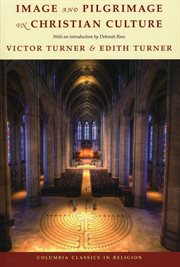Nonfiction
eBook
Details
PUBLISHED
DESCRIPTION
1 online resource
ISBN/ISSN
LANGUAGE
NOTES
First published in 1978 and hailed as "an important foreshadowing of issues that have become prominent in more recent anthropology," this classic work examines the theological doctrines, popular notions, and corresponding symbols and images promoting and sustaining Christian pilgrimage. The text examines two major aspects of pilgrimage practice: the significance of context, or the theological conditions that give rise to pilgrimage and the folk traditions that enable worshippers to absorb the meaning of the event; and the images and symbols that embody the experience of pilgrimage and transmit its visions in varying ways. Retelling its own tales of "mere mortals" confronted by potent visions, such as the man of mixed virtue who found redemption with the Lady of Guadalupe and the poor French shepherdess Bernadette whose encounter with the Lady at Lourdes inspired Christians across the globe, this book treats religious visions as both paradox and empowering phenomena, tying them explicitly to the times in which they occurred. Offering vivid vignettes of social history, it extends their importance beyond the realm of the religious to our own conceptions of reality. Extensively revised throughout, this edition also includes a new introduction by the theologian Deborah Bhatti situating the book within the work of Victor and Edith Turner and movements of contemporary culture. She addresses the book's legacy within the discipline, especially its hermeneutical framework, which introduced a novel method of describing and interpreting pilgrimage. She also credits the Turners with cementing the link between mysticism, popular devotion, and Christian culture, as well as their recognition of the relationship between pilgrimage and human beings' deep spiritual needs. In conclusion, Bhatti surveys various critiques of the Turners' work and suggests future directions for research on this topic
Mode of access: World Wide Web







